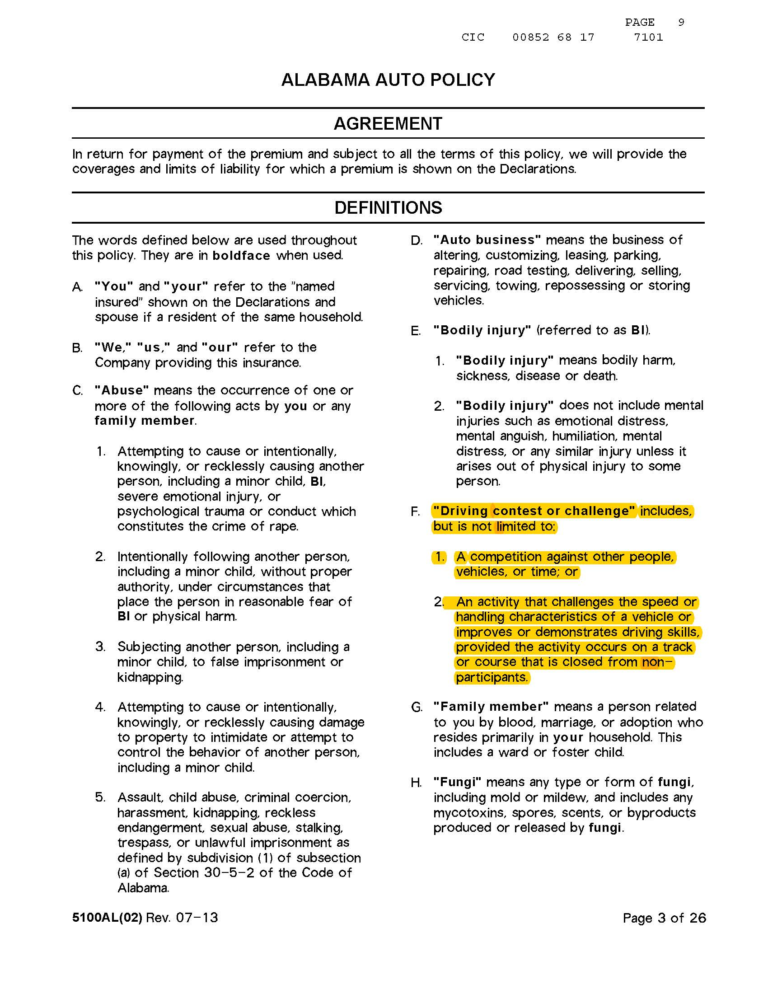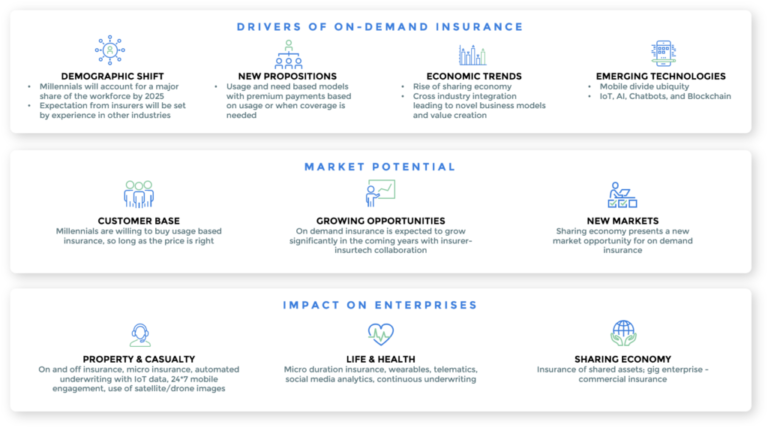Gender Equity in Insurance: Progress and Challenges Ahead
Gender equity in insurance remains a pressing issue as the industry continues to grow, yet women are still underrepresented in leadership roles. While women comprise 59.4 percent of the insurance workforce, they occupy less than 22 percent of C-suite positions, highlighting significant gender disparities at the top. This inequity not only affects the representation of women in insurance leadership roles but also stifles the potential for innovation and diversity in decision-making. Research indicates that organizations with women leaders experience enhanced employee satisfaction and improved overall performance, underscoring the impact of women leaders on business success. As the insurance sector evolves, addressing these inequities is crucial for fostering a more inclusive workforce and meeting the demands of a diverse market.
The conversation surrounding gender equity in the insurance sector encompasses various aspects of inclusion and representation within the workforce. Terms like “workforce diversity” and “C-suite gender disparities” serve to highlight the significant gaps that persist in leadership roles across insurance companies. As more women enter the industry and occupy essential positions, the conversation shifts to the need for equitable opportunities and the potential benefits that a diverse leadership team can bring. The impact of women in executive roles not only influences company culture but also drives financial performance, making it increasingly imperative for organizations to prioritize gender parity. Ultimately, achieving a more equitable insurance landscape involves recognizing the value of diverse perspectives and fostering an environment where all talent can thrive.
The Current State of Gender Equity in Insurance
The insurance industry has made impressive strides in workforce representation, with women comprising a significant 59.4 percent of the total workforce. However, this representation sharply diminishes at the leadership level, where women hold less than 22 percent of C-suite positions. This stark contrast highlights a critical gender equity issue that persists in the industry. Despite women’s substantial presence in roles such as claims processing and sales, their advancement into executive roles remains limited, indicating systemic barriers that must be addressed to achieve true equality.
Moreover, disparities in gender representation become even more pronounced when examining the intersectionality of race and gender within insurance leadership. For instance, while white women occupy 45 percent of entry-level positions, fewer than one in five women are in direct reports to CEOs. This not only reflects the challenges faced by women in climbing the corporate ladder but also underscores the need for comprehensive diversity strategies that go beyond mere representation to foster inclusive environments conducive to advancement.
The Impact of Women Leaders on Insurance Companies
Research has consistently shown that women leaders bring a unique perspective that can positively influence organizational performance. Companies with female executives often experience lower insolvency risks and higher financial stability, as evidenced by findings from U.S. property-casualty insurance firms. This correlation suggests that gender diversity at the top levels can lead to more resilient and effective leadership, ultimately benefiting the company’s bottom line and fostering greater stakeholder trust.
Furthermore, the presence of women in leadership roles has been linked to enhanced employee satisfaction and engagement. Organizations that prioritize gender diversity tend to attract a diverse talent pool, which is increasingly important as younger generations, particularly millennials and Gen Z, prioritize workplaces that reflect their values of equity and inclusion. As these demographics become dominant in the workforce, the push for gender-diverse leadership will not only be a social imperative but also a business necessity.
C-Suite Gender Disparities: A Barrier to Progress
Despite the strong representation of women in the insurance workforce, the underrepresentation of women in C-suite roles remains a significant barrier to organizational progress. With only about 22 percent of executive positions occupied by women, the industry faces a critical challenge in harnessing the full potential of its talent pool. This disparity is not just a gender issue; it also impacts the overall effectiveness and innovation capabilities of insurance companies, as diverse leadership teams are known to drive better decision-making and strategic outcomes.
Addressing C-suite gender disparities requires a multi-faceted approach. Companies must commit to transparent recruitment processes that actively seek to promote women into leadership roles and create development programs that equip them with the necessary skills and experiences. Additionally, fostering an inclusive workplace culture that supports work-life balance is essential to retain female talent and encourage their progression into senior management positions.
The Role of Insurance Workforce Diversity
Diversity within the insurance workforce is not merely a box-checking exercise; it is essential for fostering innovation and addressing the complex challenges facing the industry today. A diverse workforce brings together a variety of perspectives and experiences, which can lead to more creative solutions and a deeper understanding of customer needs. This is particularly important in an industry that serves a wide range of clients from different backgrounds and demographics.
Moreover, embracing workforce diversity can enhance an organization’s reputation and appeal, especially among younger consumers who prioritize social responsibility. Companies that effectively leverage diversity initiatives are better positioned to attract top talent and improve their overall market competitiveness. As the industry continues to evolve, the integration of diverse voices will be crucial in shaping the future of insurance.
Strategies for Promoting Gender Equity in Insurance
To effectively promote gender equity in the insurance sector, companies must implement targeted strategies aimed at closing the gender gap in leadership. This includes establishing mentorship and sponsorship programs that connect aspiring female leaders with experienced executives who can provide guidance and advocacy. Additionally, companies should assess and revise their hiring and promotion practices to ensure they are equitable and transparent, thus providing women with equal opportunities to advance.
Investing in training and development programs tailored for women can also help bridge the skills gap that often hinders their progression into leadership roles. Programs that focus on negotiation, leadership, and strategic decision-making can empower women to confidently pursue executive positions. By fostering a culture of accountability and support, organizations can make significant strides towards achieving gender equity in insurance.
The Future of Women in Insurance Leadership Roles
Looking ahead, the future of women in insurance leadership roles appears promising, yet challenging. With predictions suggesting that women could achieve parity in senior leadership positions by 2030 to 2037, the industry must remain vigilant in its efforts to dismantle barriers preventing women’s advancement. This requires sustained commitment from corporate leaders to prioritize gender diversity and inclusion as core business strategies.
Moreover, as the insurance industry faces impending workforce attrition due to retirements and technological advancements, there is a unique opportunity to reshape leadership dynamics. By proactively promoting women to key positions during this transitional period, organizations can not only enhance their leadership diversity but also position themselves for long-term success in an increasingly competitive landscape.
The Importance of Mentorship for Women in Insurance
Mentorship plays a pivotal role in empowering women within the insurance industry and facilitating their ascent to leadership positions. Establishing formal mentorship programs can help women navigate the complexities of their careers, build essential networks, and gain valuable insights from experienced leaders. These relationships foster a supportive environment where women can share challenges and strategies for overcoming obstacles in their professional journeys.
Additionally, mentorship can help bridge the gap between entry-level positions and C-suite roles by providing women with the confidence and skills necessary to pursue leadership opportunities. As more organizations recognize the importance of mentorship, they can create a culture of support that not only enhances individual careers but also contributes to a more diverse and equitable industry overall.
Recognizing the Value of Gender Diversity in Insurance
The value of gender diversity in insurance cannot be overstated, as it directly correlates with improved business outcomes and innovation. Organizations that prioritize gender equity have been shown to outperform their competitors in terms of profitability and productivity. By embracing a diverse workforce, insurance companies can better understand and meet the needs of their diverse client base, ultimately leading to enhanced customer satisfaction and loyalty.
Furthermore, gender diversity contributes to a more dynamic and adaptable organizational culture. Companies that encourage diverse perspectives are better equipped to respond to changing market conditions and consumer demands. This adaptability is crucial in an industry facing rapid technological advancements and evolving regulatory landscapes, making the case for continued investment in gender diversity initiatives within the insurance sector.
Challenges Facing Women in Achieving C-Suite Roles
Women in the insurance industry encounter numerous challenges in their pursuit of C-suite roles, including systemic biases and cultural norms that favor male leadership. Many women face obstacles such as a lack of access to high-profile projects, networking opportunities, and sponsorship from senior executives, which can hinder their advancement. Additionally, the persistent stereotype of leadership traits being inherently masculine can further marginalize women seeking executive positions.
To address these challenges, organizations must actively work to dismantle barriers that prevent women from achieving leadership roles. This includes fostering a culture that values and recognizes diverse leadership styles and promoting policies that support work-life balance, such as flexible work arrangements and parental leave. By creating an environment where women can thrive, the insurance industry can begin to rectify the gender disparities that persist in its leadership ranks.
Frequently Asked Questions
What is the current state of gender equity in insurance leadership roles?
Despite women constituting 59.4% of the insurance workforce, only less than 22% of C-suite positions are held by women. This stark contrast highlights ongoing gender equity challenges within insurance leadership roles, significantly impacting organizational effectiveness and culture.
How do women in insurance impact workforce diversity?
Women play a crucial role in enhancing workforce diversity in the insurance sector. They represent a substantial portion of various roles, including 80.1% in claims and policy processing, 54.9% in sales, and 56.9% as underwriters, which contributes to a more varied and inclusive workplace.
What are the implications of C-suite gender disparities in the insurance industry?
C-suite gender disparities in the insurance industry can lead to a lack of diverse perspectives in decision-making processes. This not only undermines potential growth and innovation but also affects recruitment efforts, as candidates often seek environments with visible gender equity at the leadership level.
What is the impact of women leaders on insurance companies?
Research indicates that companies with women in leadership positions experience better performance outcomes, including lower insolvency rates and improved financial metrics. Women leaders foster a culture of inclusivity, driving growth and enhancing employee satisfaction, which is crucial for long-term success.
Why is gender equity in insurance important for future growth?
Achieving gender equity in insurance is vital for future growth as the industry faces significant workforce attrition. Diverse leadership can improve decision-making and innovation, which are essential for navigating challenges posed by automation and evolving market demands.
How can the insurance sector improve gender equity in leadership roles?
To improve gender equity in leadership roles, the insurance sector must prioritize mentorship programs, equitable hiring practices, and create pathways for women to advance into senior positions. Fostering an inclusive culture that values diversity at all levels is critical for long-term change.
What role does organizational diversity play in achieving gender equity in insurance?
Organizational diversity is essential for achieving gender equity in insurance as it brings together different perspectives to solve business challenges. Promoting diverse talent throughout all levels of an organization helps dismantle glass ceilings and reinforces a commitment to equity and inclusion.
What are the forecasts for gender parity in insurance leadership by 2030?
Forecasts suggest that gender parity in senior leadership positions within the insurance sector may not be fully realized until between 2030 and 2037. Continuous efforts to promote women into leadership roles are necessary to accelerate this timeline.
How does the gender equity landscape in insurance compare to other industries?
The gender equity landscape in insurance reveals significant disparities similar to those in other industries, particularly at the C-suite level. However, the insurance sector lags behind in achieving gender balance, emphasizing the need for targeted initiatives to foster female leadership.
What challenges do women in insurance face regarding career advancement?
Women in insurance often face challenges such as limited access to mentorship, pervasive gender biases, and insufficient representation in decision-making roles, all of which hinder their career advancement and contribute to the ongoing gender equity issues in the industry.
| Key Points | Details |
|---|---|
| Women in Workforce | Women represent 59.4% of the insurance workforce. |
| C-Suite Representation | Less than 22% of C-suite roles are occupied by women. |
| Claims and Sales Roles | Women make up 80.1% of claims clerks, 54.9% in sales. |
| Diversity Disparities | Gender and racial disparities persist in leadership roles. |
| Future Projections | Parity in senior leadership may occur between 2030-2037. |
| Impact of Female Leadership | Women in leadership positively influence organizational growth and satisfaction. |
| Generational Shifts | Millennials and Gen Z hold significant spending power. |
Summary
Gender equity in insurance is vital for the industry’s growth and sustainability. Despite the significant representation of women in the workforce, they remain underrepresented in leadership roles, particularly in the C-suite. Achieving gender equity not only addresses this disparity but also enhances organizational performance and innovation. As the insurance sector anticipates a wave of workforce attrition, embracing diversity and promoting women to leadership positions will be crucial. The market’s demographic shifts, driven by educated and financially empowered younger generations, further underscore the necessity for the insurance industry to align its leadership with the evolving workforce.







